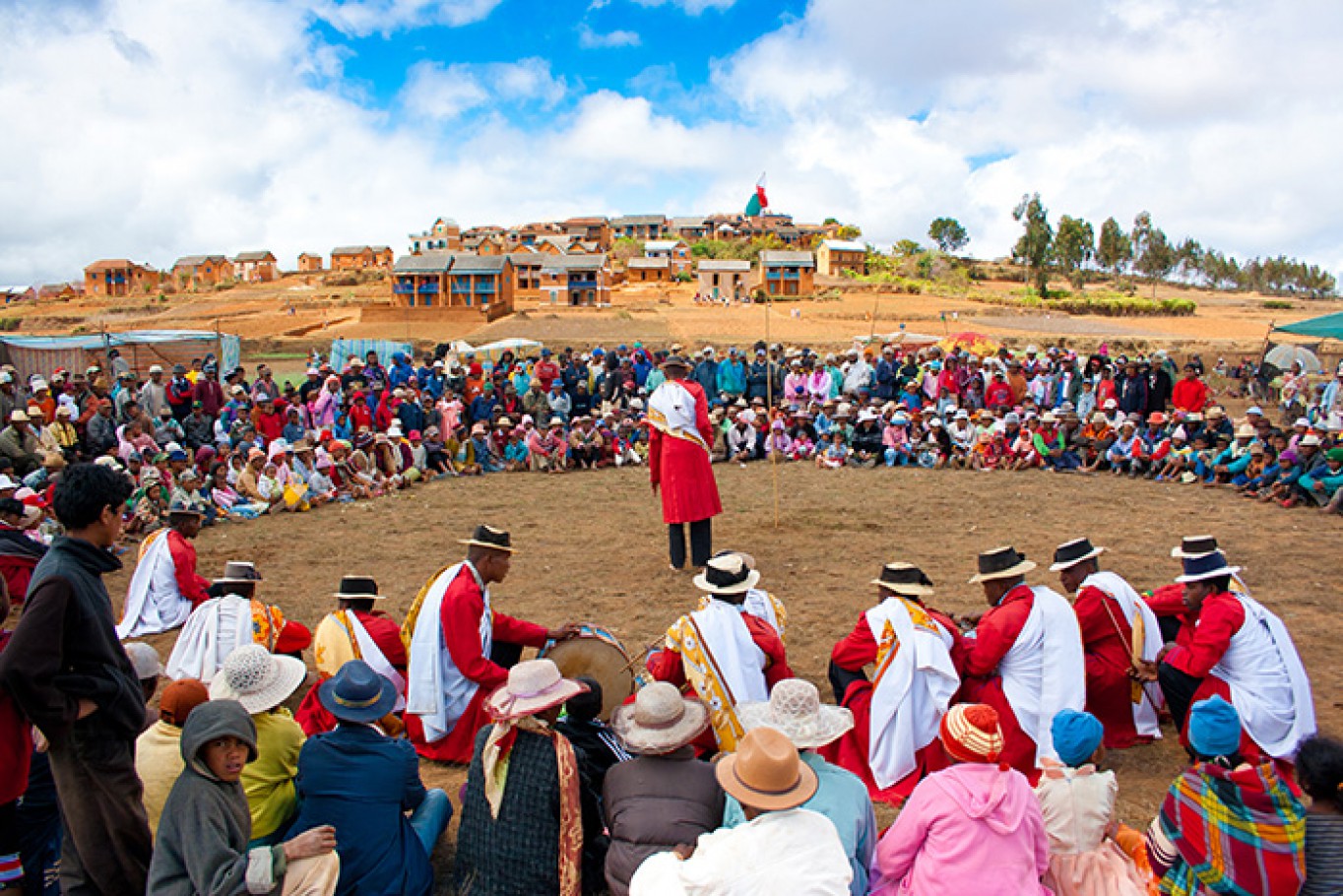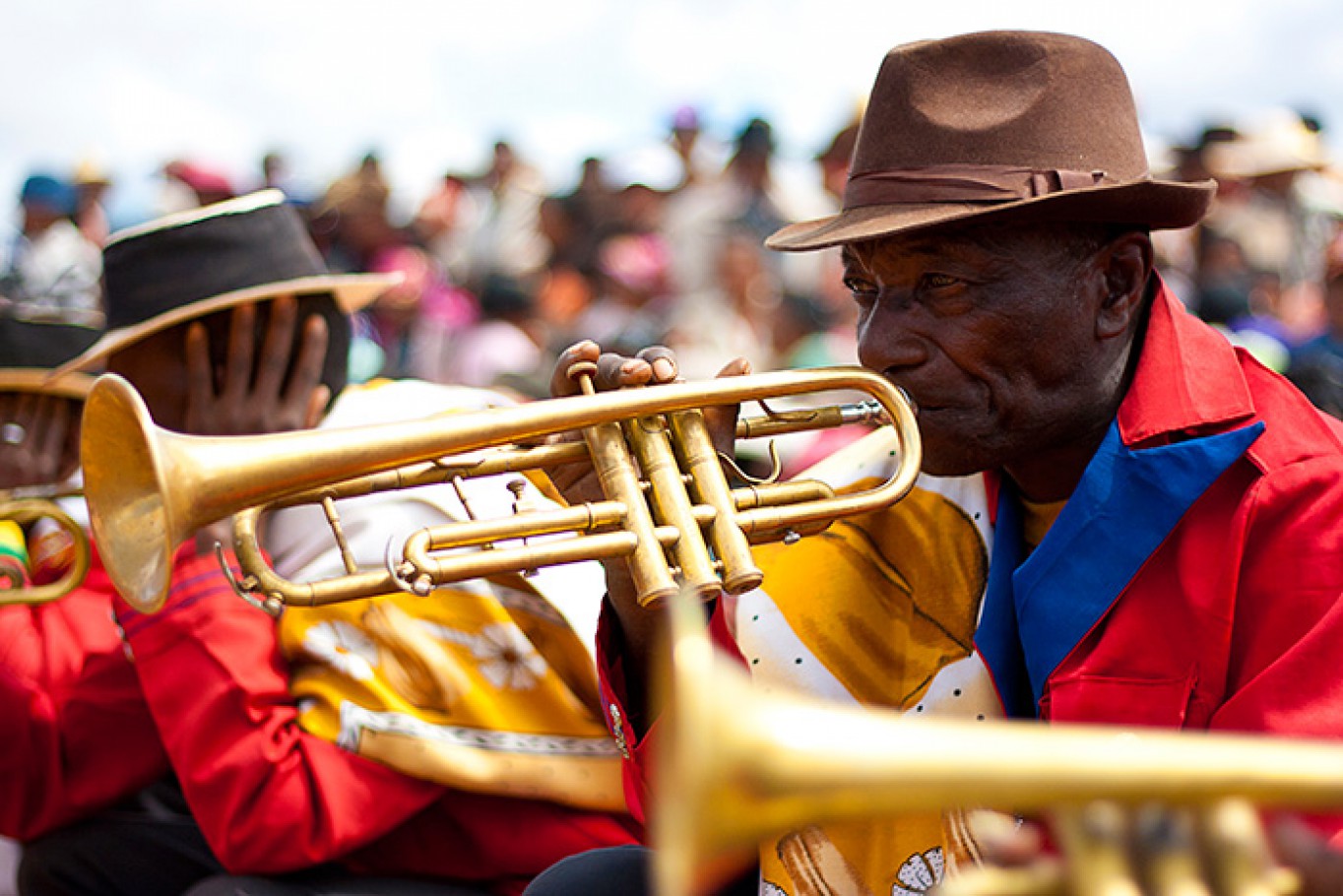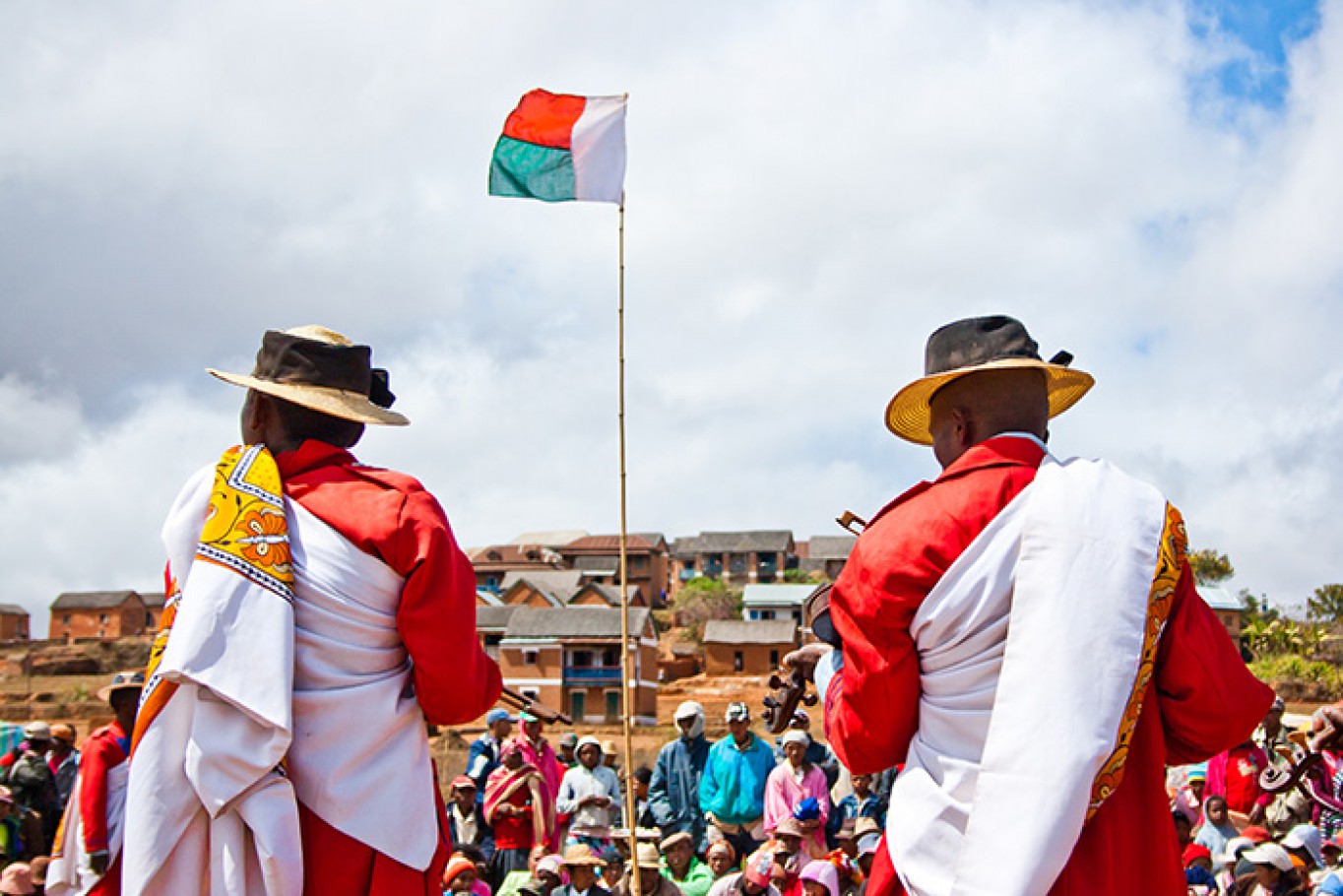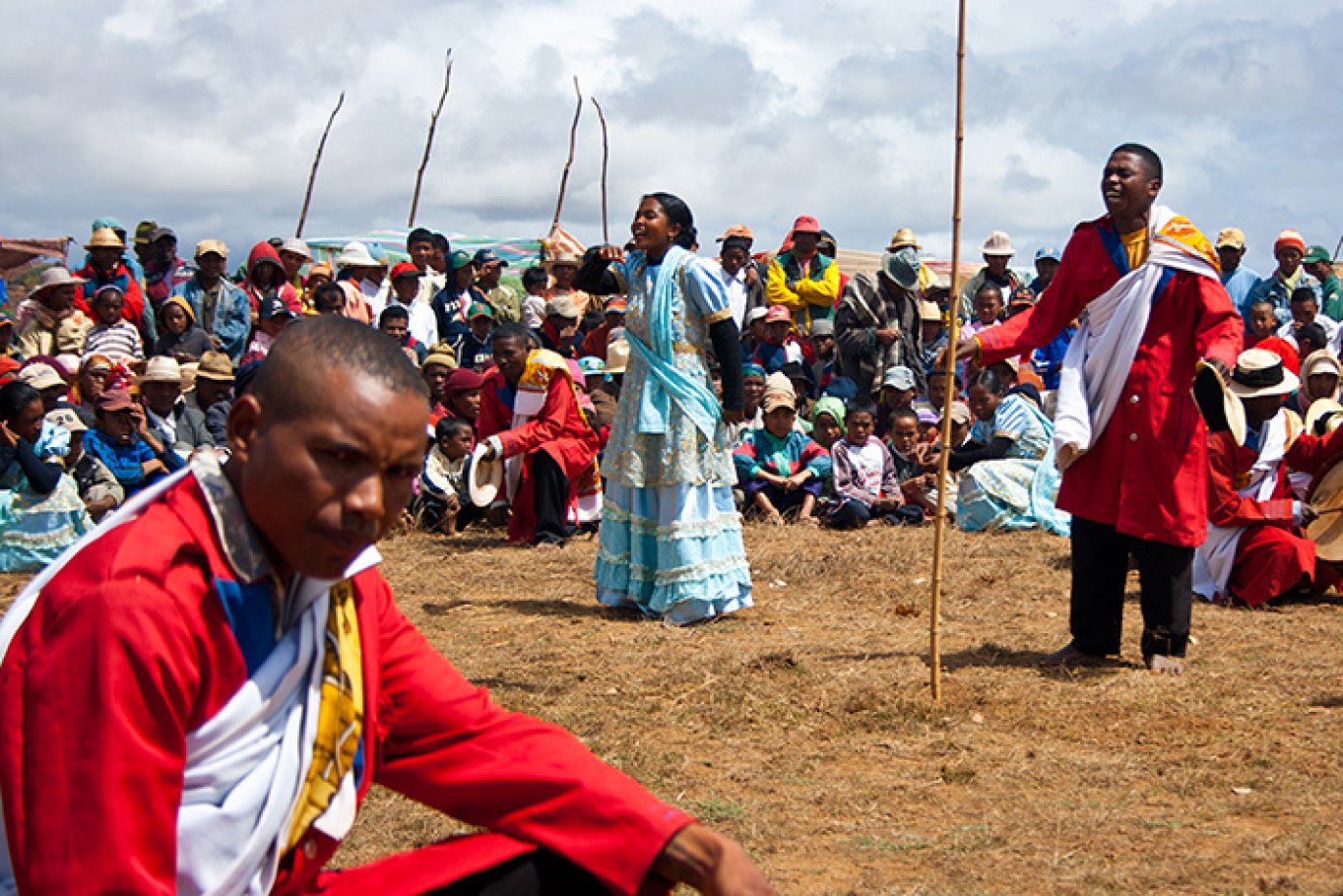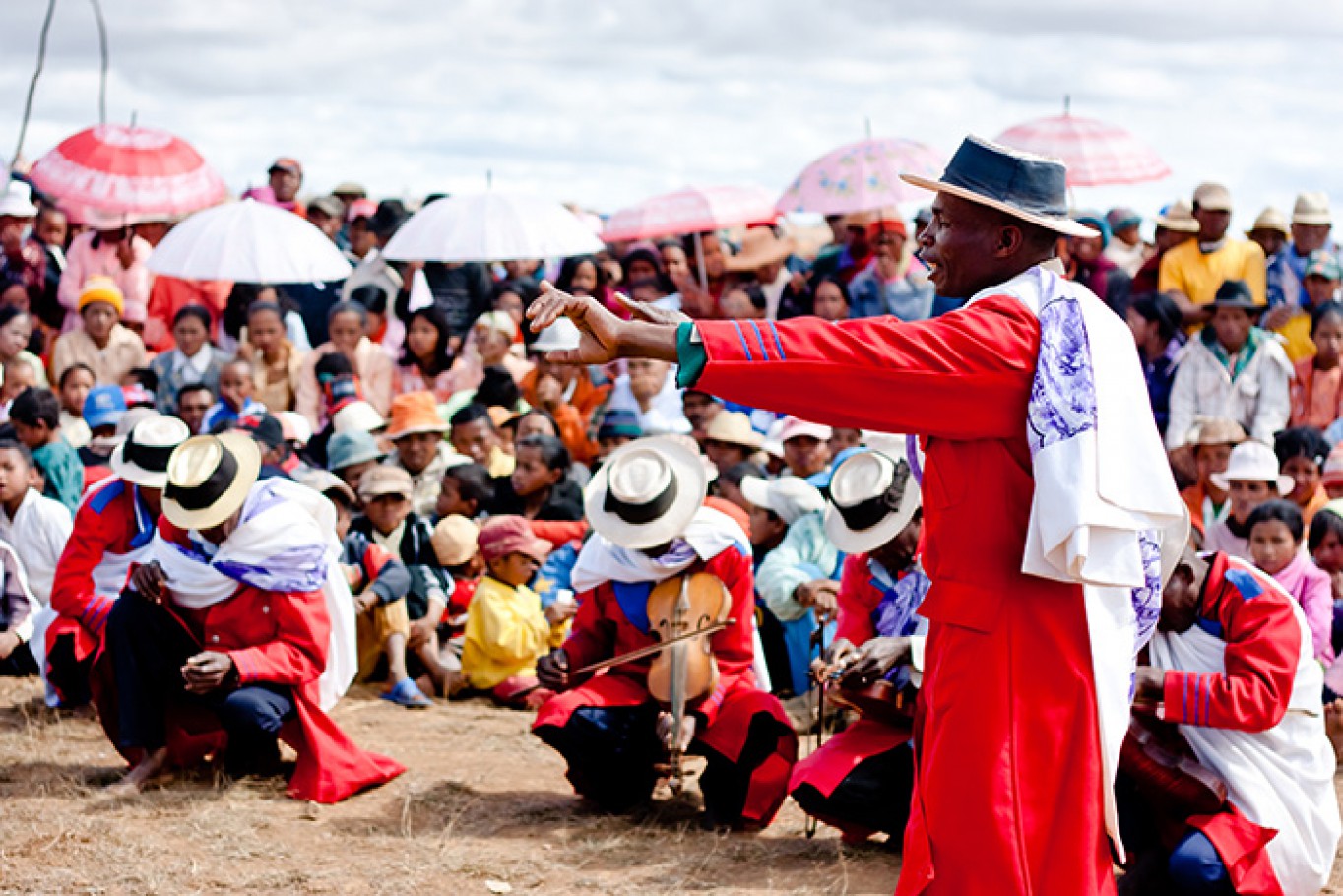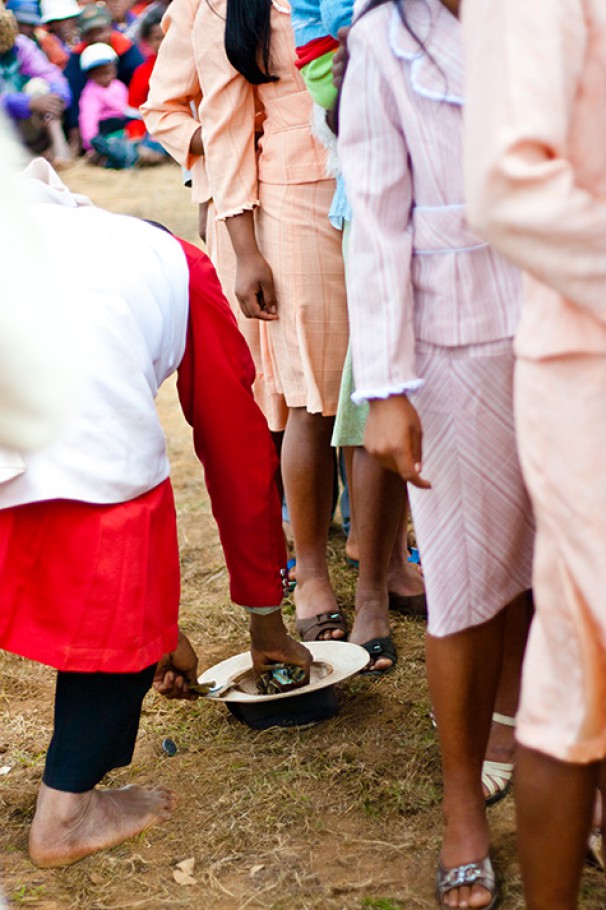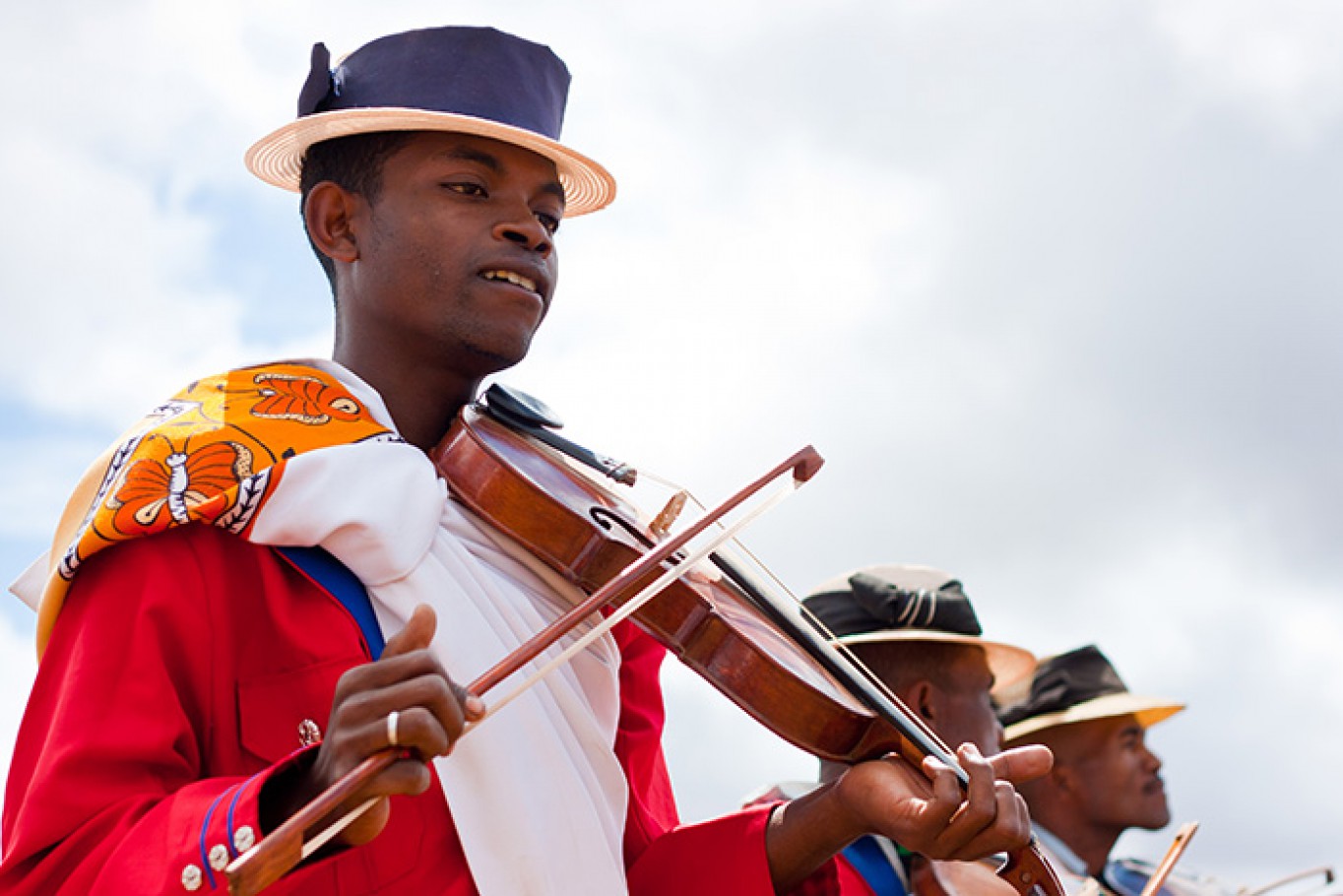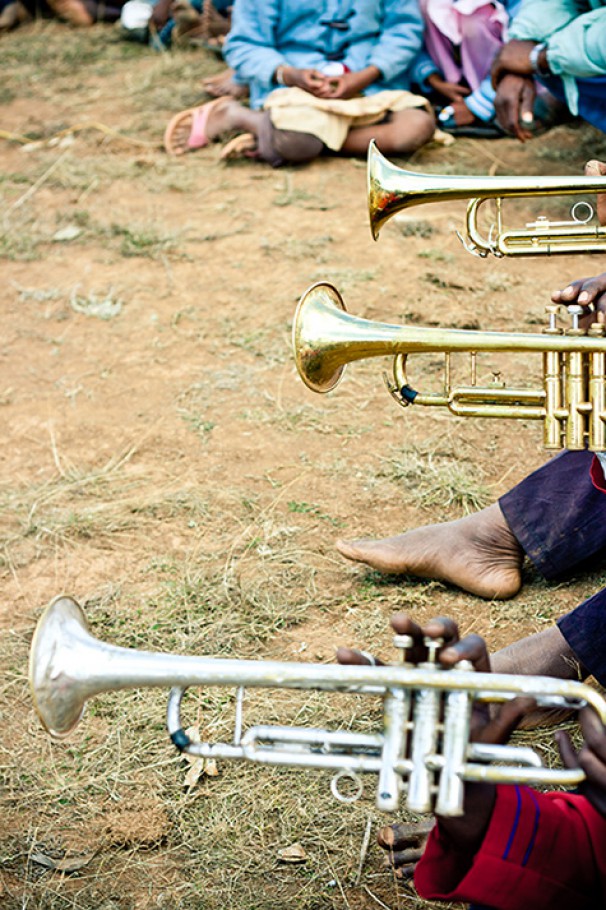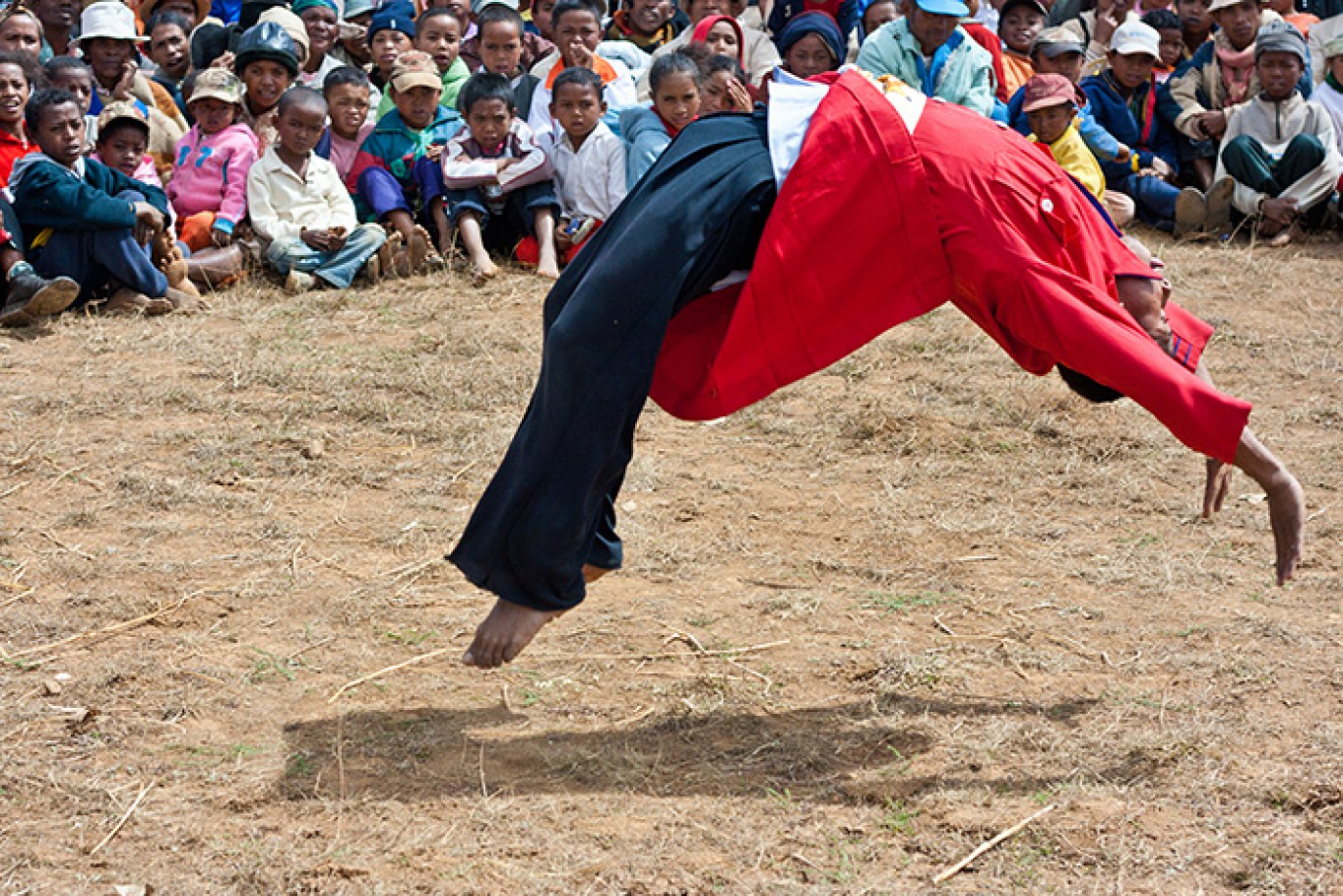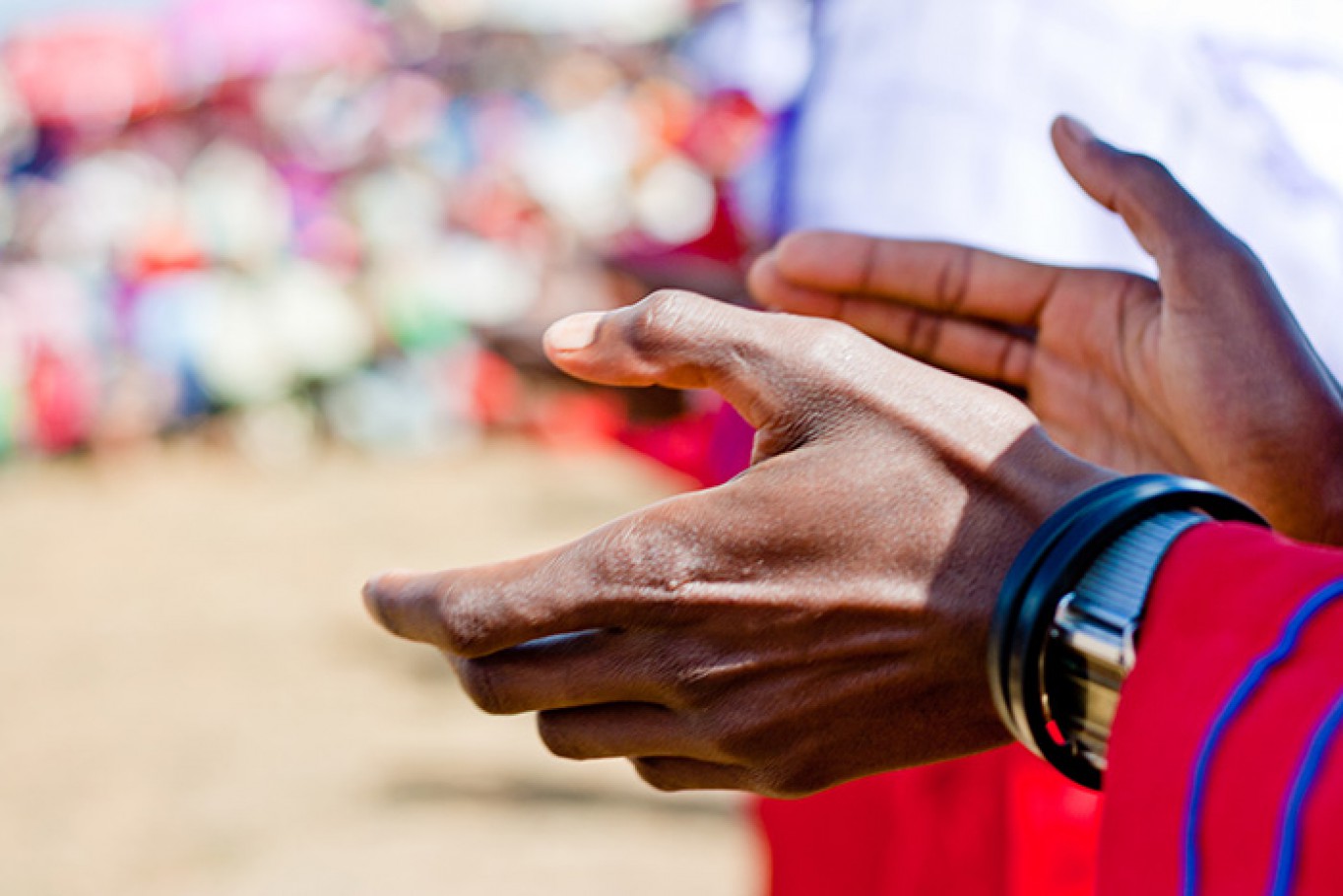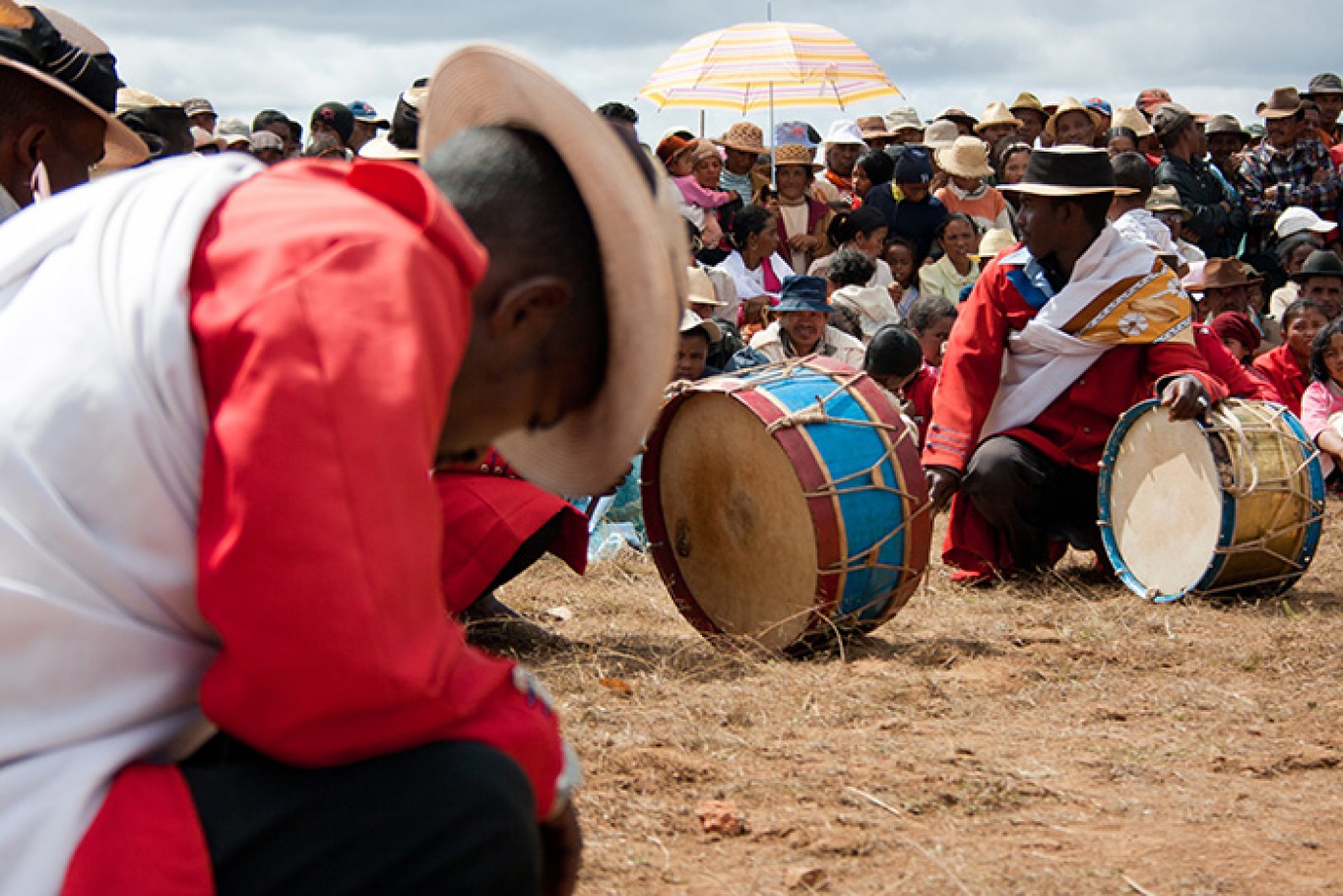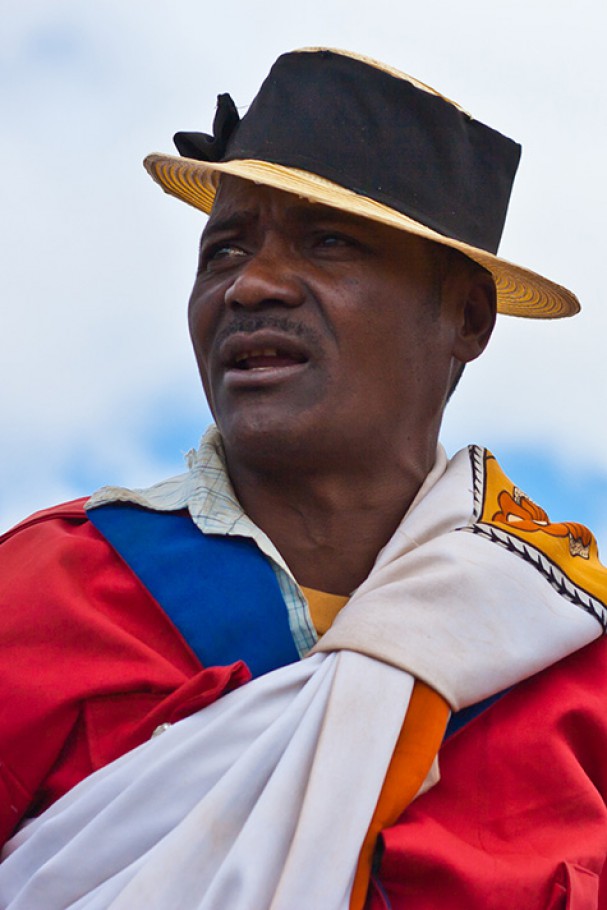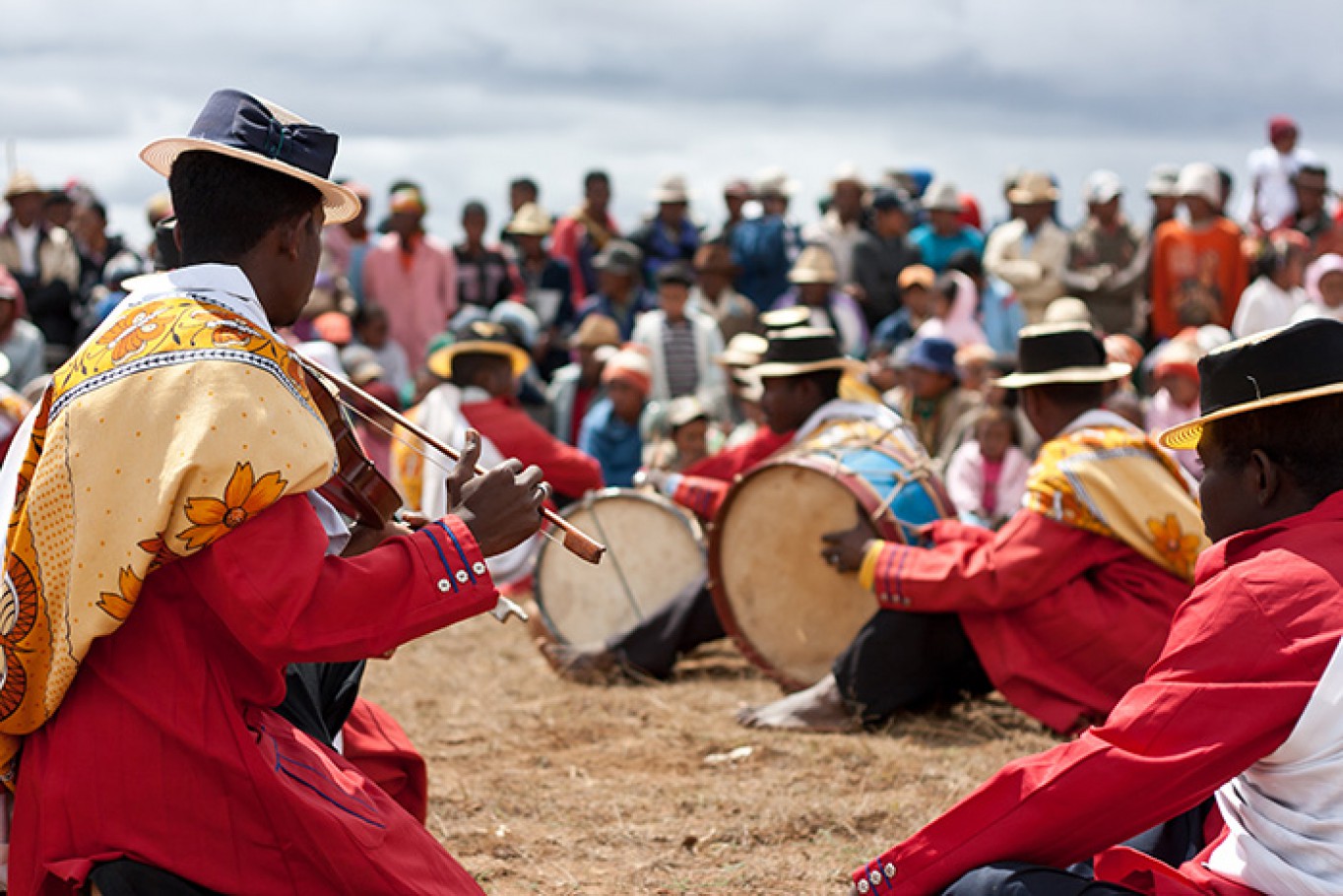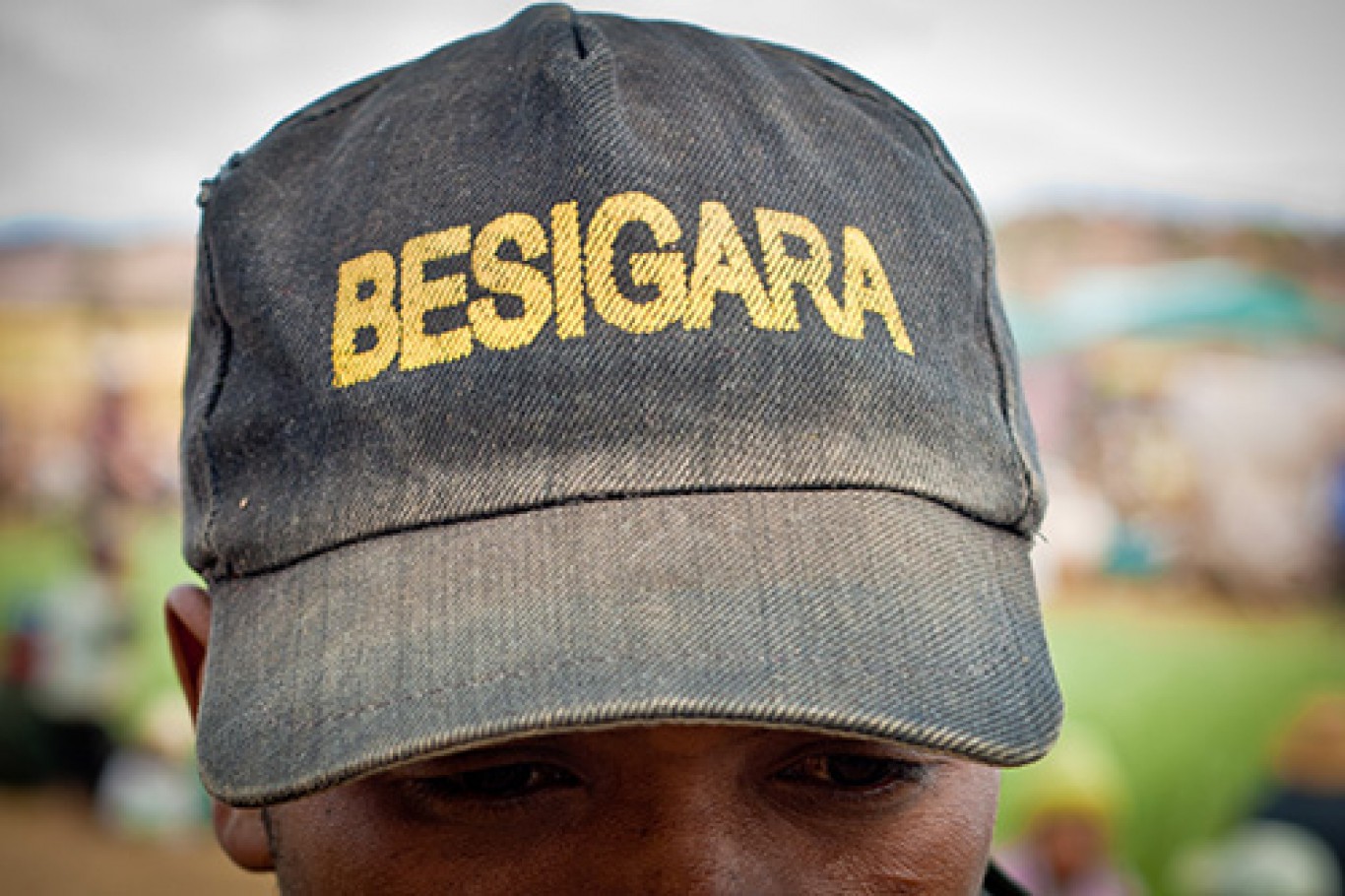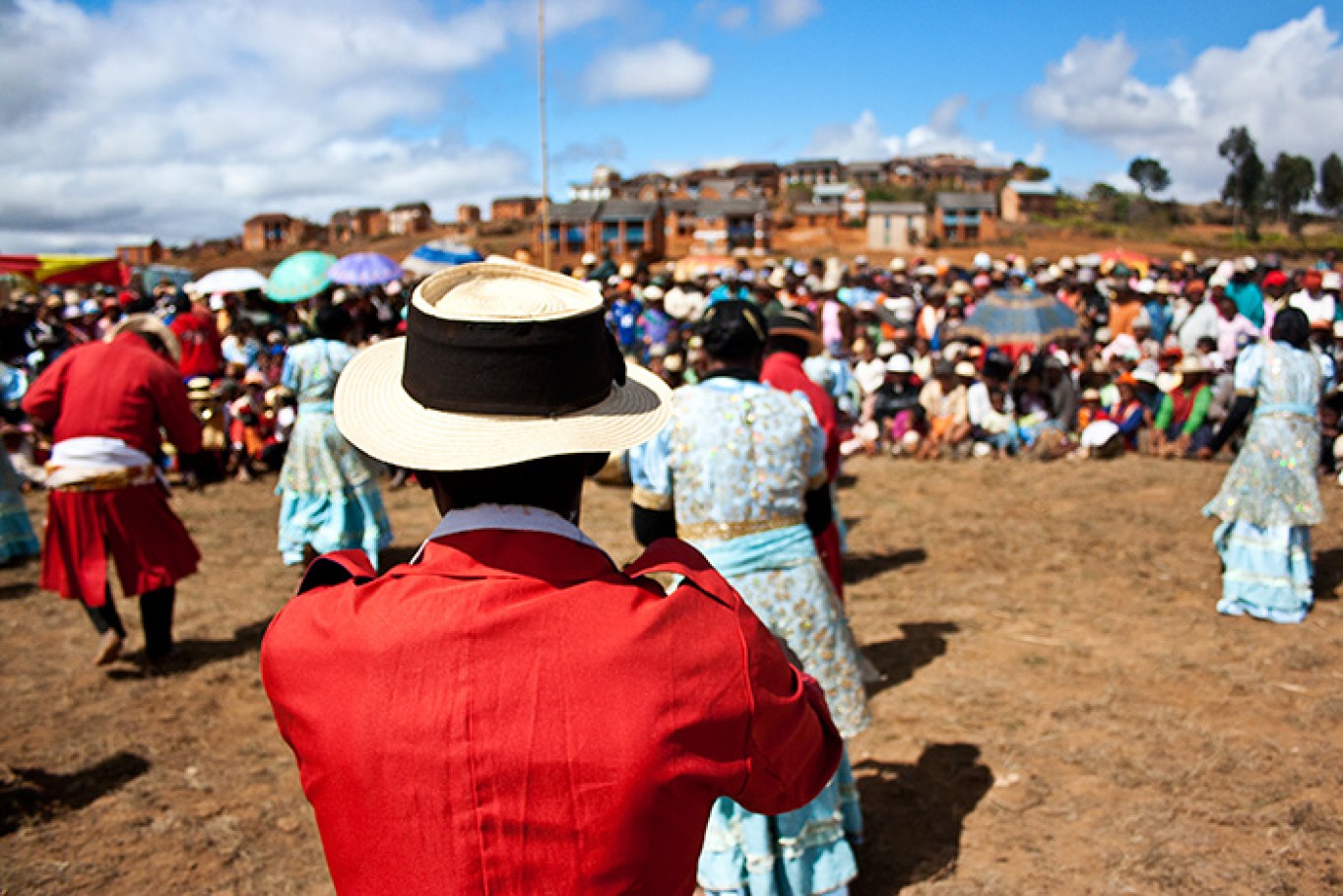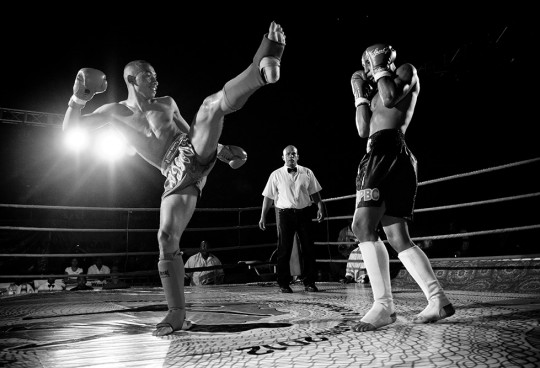Hira Gasy, a malagasy ancestral art
Location: Ambohimandroso, Madagascar
Date: 2011
The gasy Hira, an unique and ancestral art dating of the Malagasy kings and the 19th century, had its beginnings in Imerina and still continues to this day thanks to the cultural legacy transmitted by the "mpihiragasy" from generation to generation.
If we go back to the basic, the Hira Gasy is also a mix of the meeting of two different cultures from which the appellation of Zafindraony: the ancestral songs from the Kabary Malagasy or Malagasy traditional speech with foreign music like the Christian hymns brought by Catholic missionaries Jesuits and Protestants from the London Missionary Society or LMS. This mixture changed the Hira Gasy in the use of musical instruments, the tones and rhythm.
The hira gasy was also a means of resistance to colonialism being a "people's media" and allowing malagasy people to be informed despite the repression, seduction attempts, submission and collaboration proposal by the colonizers.
As for the subject he treats, he remains realistic and often refers to the lives of Malagasy, love, relationships between parents and children, history, good and bad, anecdotes, ridicule, ... etc.
The Hira Gasy vehicules educational and moral values, especially the fundamental philosophy of life, mind and "fihavanana".
Le hira gasy, un art ancestral unique en son genre et spectaculaire datant des rois malgaches et du 19è siècle, a connu ses débuts en Imerina et perdure encore jusqu'à nos jours grace à l'héritage culturel qu'ont transmis les "mpihiragasy" de génération en génération.
Si on fait un retour aux sources, le Hira Gasy est un mélange de la rencontre de deux cultures différentes de là son appelation de Zafindraony: les chants ancestraux malagasy issus des Kabary ou discours traditionnels malgaches avec les musiques étrangères; les cantiques chrétiens véhiculés par les missionnaires catholiques Jésuites et protestants de la London Missionnary Society ou L.M.S. Cette rencontre à fait évoluer cet art vers un changement dans l'utilisation des instruments musicaux et dans le ton et le rythme.
Le hira gasy a également été un moyen de résistance au colonialisme en étant un "média du peuple" permettant aux malgaches d'être informés malgré la répression, les tentatives de séduction, de soumission et de proposition de collaboration des colonisateurs du temps des Menalamba.
Quant au sujet qu'il traite, il reste toujours réaliste et évoque souvent le quotidien des malgaches, l'amour, les relations entre parents et enfants, l'histoire, le bien et le mal, les anecdotes, le ridicule,...etc. Le Hira Gasy véhicule ainsi des valeurs éducatives et morales, surtout la philosophie fondamentale sur la vie, l'esprit et le "fihavanana".
